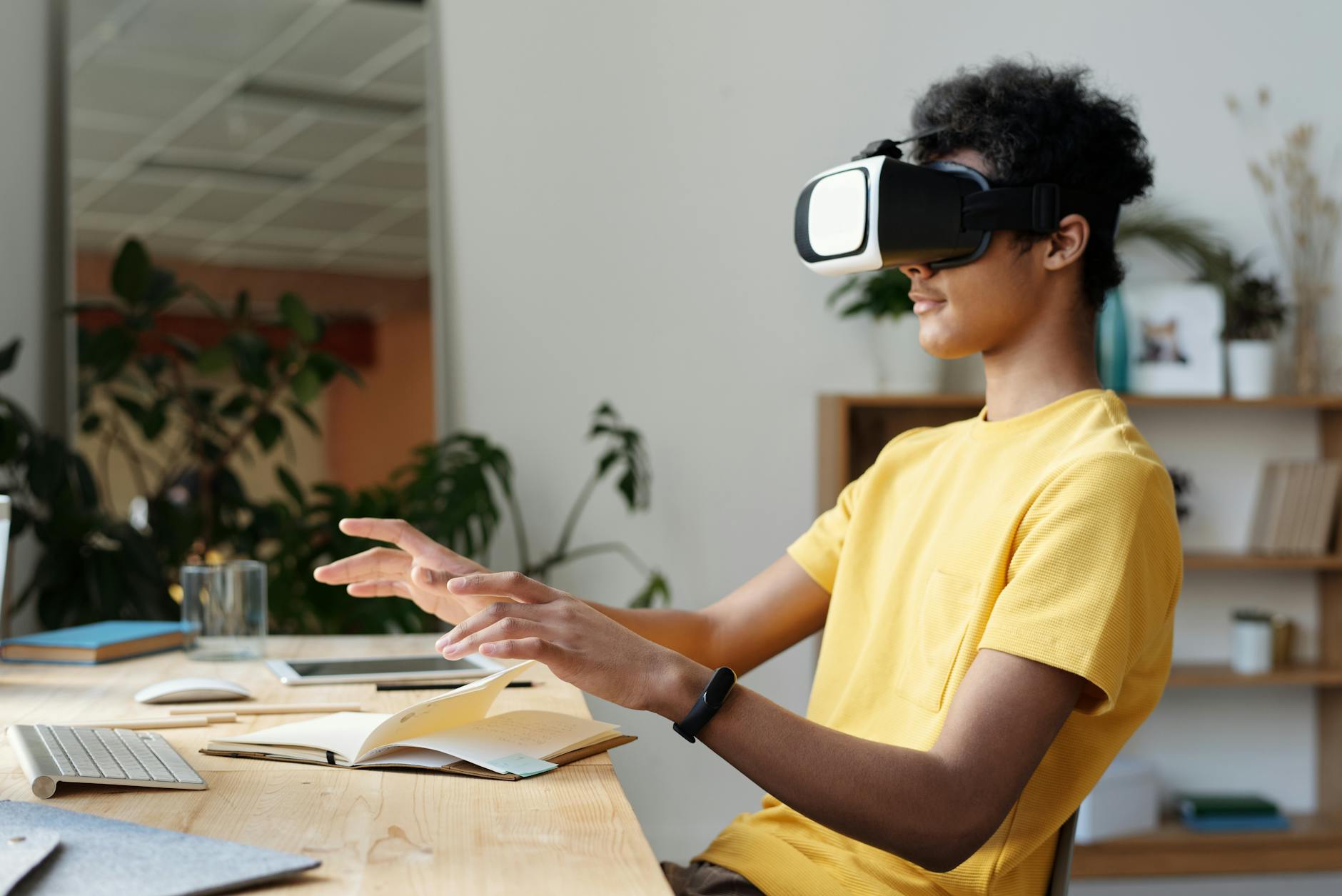The Rise of the “Vibe Coder”: When Intuition Trumps Syntax in the Age of AI
Democratizing Development or Diluting Expertise? Exploring the New Frontier of “Coding by Feeling.”
The digital landscape is undergoing a seismic shift. As artificial intelligence tools become more sophisticated and accessible, the once-impenetrable fortress of coding is showing cracks. No longer is the ability to craft intricate lines of code the sole gateway to creating functional applications. Instead, a new breed of “developer” is emerging, one who navigates the creation process not by mastering syntax and logic, but by harnessing intuition and “vibe.” This phenomenon, aptly dubbed “vibe coding,” promises to democratize innovation, but raises critical questions about the quality and sustainability of software built on feeling rather than formal knowledge.
The very premise of building software has been reshaped by the advent of powerful AI models capable of generating code, translating natural language into executable commands, and even assisting in debugging. This technological leap forward has effectively lowered the barrier to entry, making the creation of digital products and applications more approachable than ever before. However, as we embrace this new era, it’s crucial to examine the implications of a paradigm shift where the “how” of coding is increasingly abstracted away, leaving the “what” and “why” to be driven by less technical, more intuitive approaches.
This article delves into the heart of vibe coding, exploring its origins, its mechanics, and the profound impact it’s having on the software development world. We’ll dissect what it truly means to code by “vibe,” consider the potential benefits and drawbacks of this approach, and ultimately, contemplate its role in the future of technological creation. Is this the dawn of a more inclusive and innovative era, or a slippery slope towards diluted expertise and unreliable software? Join us as we unpack the complexities of this fascinating new trend.
Context & Background: The AI Revolution and the Shifting Sands of Software Development
For decades, the path to becoming a software developer was a well-trodden, albeit challenging, one. It involved rigorous study of programming languages like Python, Java, C++, and JavaScript, coupled with a deep understanding of algorithms, data structures, and computer science principles. The ability to write clean, efficient, and bug-free code was paramount, requiring years of dedicated practice and problem-solving.
However, the past few years have witnessed an unprecedented acceleration in the capabilities of artificial intelligence, particularly in the realm of generative AI. Large Language Models (LLMs) have evolved from novelty tools to powerful co-pilots, capable of understanding natural language prompts and translating them into functional code. Tools like GitHub Copilot, OpenAI’s Codex, and numerous other AI-powered coding assistants have become integral to the workflows of many developers, automating repetitive tasks, suggesting code snippets, and even helping to explain complex logic.
This AI revolution has had a democratizing effect on software creation. Individuals who might have previously been intimidated by the steep learning curve of traditional coding can now leverage AI to bring their ideas to life. A small business owner can describe their desired website functionality in plain English, and an AI can generate the necessary HTML, CSS, and JavaScript. A student with a novel app concept can use AI to scaffold the initial code, allowing them to focus on the user experience and the core features.
This shift has given rise to what is being termed “vibe coding.” It’s not about understanding the intricate syntax of Python or debugging memory leaks. Instead, it’s about articulating a desired outcome, a feeling, or an aesthetic, and then using AI tools to translate that “vibe” into a tangible digital product. The user doesn’t necessarily need to know *how* the code works, only *what* they want it to do and, crucially, how they want it to *feel* to the end-user. This intuitive, almost artistic approach to creation bypasses the traditional, often arduous, learning process.
The source material highlights this distinction effectively. The “vibe coder” doesn’t grapple with semicolons or indentation errors. Their success hinges on their ability to communicate their vision clearly to the AI, to iterate based on the AI’s output by providing feedback that aligns with their desired aesthetic or functional “vibe.” It’s a process that can feel more like creative direction than technical implementation.
This evolution is not entirely unprecedented. Throughout the history of technology, there have been shifts that have made complex processes more accessible. The transition from assembly language to high-level languages, the development of graphical user interfaces (GUIs), and the rise of no-code/low-code platforms all represent attempts to abstract away technical complexities and empower a wider audience. Vibe coding, fueled by AI, appears to be the latest and perhaps most potent iteration of this trend.
However, this newfound accessibility also introduces a new set of challenges. What happens when the “vibe” is subjective, or when the AI’s interpretation of that vibe leads to inefficient or insecure code? How do we ensure quality and maintainability when the underlying technical scaffolding is opaque to the creator? These are the critical questions that arise from the emergence of the vibe coder.
In-Depth Analysis: The Mechanics and Implications of “Vibe Coding”
At its core, vibe coding is a human-AI collaborative process where the human guides the creation of software based on desired outcomes, aesthetics, and functional “feel,” rather than deep technical knowledge. The AI acts as an interpreter, translator, and even a generator of the underlying code based on these intuitive inputs. Let’s break down the typical workflow and its implications:
1. The Vision and the Prompt: The vibe coder begins with an idea, often a feeling or a specific user experience they want to achieve. This is then translated into natural language prompts for an AI tool. For example, instead of specifying `
2. AI Interpretation and Generation: The AI model, trained on vast datasets of code and natural language, attempts to interpret this prompt. It might generate HTML for the button’s structure, CSS for its styling (including hover effects), and potentially even JavaScript for interactive elements. The AI’s success here depends on its ability to understand nuanced language and translate it into executable code that aligns with the human’s abstract request.
3. Iteration and Refinement through Feedback: This is where the “vibe” truly takes shape. If the AI-generated button isn’t quite right – perhaps the glow is too aggressive, or the shape feels a bit off – the vibe coder provides further natural language feedback. “Make the glow softer,” or “Give it slightly rounded corners,” or even “It needs to feel more professional, less playful.” The AI then revises the code based on this feedback. This iterative process can continue until the desired “vibe” is achieved.
Implications of this Process:
- Democratization of Creation: The most significant implication is the lowering of barriers to entry. Individuals without formal programming education can now build functional applications, websites, and even simple software tools. This can foster innovation from a broader range of perspectives, bringing diverse ideas to the forefront.
- Focus on User Experience and Aesthetics: Vibe coding inherently prioritizes the end-user experience and the aesthetic appeal of the product. Creators can focus on what the user will see and feel, rather than getting bogged down in technical implementation details. This could lead to more user-centric and intuitively designed digital products.
- Accelerated Prototyping: For those with an idea, vibe coding can significantly speed up the prototyping phase. Instead of spending weeks or months writing initial code, a functional prototype can be generated in a matter of hours or days, allowing for rapid testing and validation of concepts.
- Potential for Inefficient or Suboptimal Code: The major drawback is the potential for the AI to generate code that is not optimized for performance, security, or maintainability. Without a deep understanding of coding best practices, a vibe coder might inadvertently create code that is bloated, vulnerable to attacks, or difficult for future developers to modify. The AI might prioritize fulfilling the prompt over adhering to industry standards.
- “Black Box” Development: The underlying code generated by the AI can often be a “black box” for the vibe coder. They may not understand *why* certain code works, or how to effectively debug or extend it beyond the initial prompt. This can lead to a reliance on the AI for all future modifications, creating a dependency that might hinder long-term project sustainability.
- Skill Diversification, Not Replacement: It’s crucial to view vibe coding not as a replacement for traditional coding expertise, but as a complementary skill. Developers who can effectively leverage AI to enhance their workflow will likely be more productive. However, traditional skills remain essential for building robust, scalable, and secure software systems.
- The “Vibe” is Subjective: The success of vibe coding heavily relies on the clarity of the human’s “vibe” and the AI’s ability to interpret it accurately. What one person considers a “good vibe” might be perceived differently by another, leading to potential misinterpretations and the need for extensive iteration.
The analogy often used in the source material – that of a director guiding actors – is apt. The director knows the overall vision and the emotional tone they want to convey, but they rely on the actors (the AI) to embody those characters and perform the scenes. The director’s skill lies in their ability to communicate their vision and provide direction, not necessarily in their ability to act themselves. Similarly, the vibe coder’s skill lies in their ability to articulate their vision and guide the AI.
However, a director also understands the nuances of acting, stagecraft, and the overall production. A true vibe coder might eventually develop an intuition for what kind of prompts will yield the best results, even if they don’t understand the technical underpinnings. This nascent understanding, driven by experience with AI tools, could bridge the gap between pure intuition and a more informed approach to software creation.
Pros and Cons: Weighing the Benefits Against the Risks
The emergence of vibe coding presents a compelling duality, offering significant advantages while also introducing substantial challenges. As with any disruptive technology, understanding both sides of the coin is crucial for navigating its impact effectively.
Pros of Vibe Coding:
- Accelerated Innovation and Prototyping: Vibe coding allows individuals and small teams to rapidly transform abstract ideas into tangible prototypes. This significantly reduces the time and resources traditionally required for initial development, enabling faster iteration and validation of concepts. The ability to quickly test market viability or gather user feedback on early-stage products is a major boon.
- Democratization of Creativity and Entrepreneurship: By lowering the technical barrier to entry, vibe coding empowers a wider audience of individuals, including those without formal computer science degrees, to become creators. This can foster a more diverse ecosystem of digital products and services, driven by a broader range of perspectives and experiences. Small business owners, artists, educators, and non-technical entrepreneurs can now build their own digital solutions.
- Focus on User Experience and Design: Vibe coding naturally shifts the focus towards the end-user experience and the aesthetic qualities of a product. Creators can prioritize how an application looks, feels, and interacts, ensuring it is intuitive and engaging, without being excessively constrained by technical limitations or the need to write complex code from scratch.
- Empowerment of Non-Technical Professionals: Professionals in fields like marketing, design, or operations can leverage vibe coding to build custom tools or dashboards tailored to their specific needs. This reduces reliance on IT departments or external developers for every small requirement, leading to increased agility and self-sufficiency.
- Learning Through Doing (with AI Assistance): While not a replacement for formal learning, vibe coding can serve as an engaging entry point into software creation. Users learn to articulate their requirements clearly and observe how the AI translates those into functional outputs, fostering a practical understanding of cause and effect in software development.
- Increased Productivity for Existing Developers: For experienced developers, AI-powered coding assistants that facilitate vibe coding can automate boilerplate code generation, suggest solutions, and handle mundane tasks, freeing them to focus on more complex architectural decisions and problem-solving.
Cons of Vibe Coding:
- Potential for Inefficient and Suboptimal Code: AI models, while powerful, may not always generate the most optimized, efficient, or secure code. Without a deep understanding of algorithms, data structures, and performance best practices, vibe coders can inadvertently create code that is slow, resource-intensive, or prone to bugs.
- Security Vulnerabilities: The abstraction of code creation can lead to a lack of awareness regarding security best practices. AI-generated code might inadvertently contain vulnerabilities that a seasoned developer would avoid. This can expose applications and user data to risks.
- Maintainability and Scalability Challenges: Code generated through vague or subjective prompts can be difficult to maintain, debug, or scale in the long run. If the creator doesn’t understand the underlying logic, making future modifications or integrating new features can become a significant hurdle, potentially leading to technical debt.
- “Black Box” Dependence: Vibe coders may become overly reliant on AI tools, treating them as a black box. This can hinder their ability to troubleshoot problems independently, adapt to new technologies, or contribute to the codebase in a meaningful way beyond the initial generation. The lack of foundational understanding can be a significant bottleneck.
- Quality Control and Consistency: The subjective nature of “vibe” can lead to inconsistencies in quality and functionality. Without standardized development practices, applications built purely on vibe could lack the robustness and reliability expected from professionally developed software.
- Ethical Considerations and Misuse: The ease of creation could be misused to generate deceptive content, spread misinformation, or create applications with malicious intent, especially if the underlying AI is not carefully governed.
- Deskilling and Erosion of Traditional Expertise: There’s a concern that an over-reliance on AI-driven creation might lead to a decline in the demand for traditional coding skills, potentially devaluing the expertise built through years of study and practice.
Ultimately, vibe coding represents a double-edged sword. It has the potential to unlock unprecedented levels of creativity and accessibility in software development. However, it also necessitates a mindful approach to ensure that the resulting products are not only aesthetically pleasing and functionally aligned with intent but also robust, secure, and maintainable. The key lies in striking a balance, perhaps by viewing vibe coding as a powerful tool to augment, rather than entirely replace, foundational technical understanding.
Key Takeaways: The Essence of Vibe Coding
- Democratization of Creation: AI tools are lowering the barriers to software development, allowing individuals without formal coding knowledge to create applications.
- Intuition Over Syntax: “Vibe coding” emphasizes articulating desired outcomes and aesthetics through natural language, rather than mastering programming languages.
- AI as a Co-pilot: Artificial intelligence acts as an interpreter and generator, translating intuitive human prompts into functional code.
- Focus on User Experience: This approach prioritizes how an application looks, feels, and interacts, leading to potentially more user-centric designs.
- Rapid Prototyping: Vibe coding enables quicker iteration and testing of ideas, significantly reducing development time for initial concepts.
- Risk of Suboptimal Code: Without deep technical knowledge, AI-generated code might be inefficient, insecure, or difficult to maintain and scale.
- “Black Box” Dependency: Creators may become reliant on AI tools without understanding the underlying code, hindering independent problem-solving.
- Complementary, Not Replacement: Vibe coding is best viewed as a powerful augmentation to traditional coding skills, not a complete substitute.
- Quality Control is Crucial: Ensuring the robustness, security, and long-term viability of AI-generated applications requires careful consideration beyond just the initial “vibe.”
- Skill Evolution: The ability to effectively prompt and guide AI, combined with a foundational understanding of software principles, will likely define future successful creators.
Future Outlook: The Evolving Landscape of Software Creation
The trajectory of vibe coding suggests a future where the lines between creator, designer, and developer blur even further. As AI models become more sophisticated, their ability to interpret nuanced human intent and generate increasingly complex and optimized code will only grow. This will likely lead to several key developments:
1. Enhanced AI Assistants: We can expect AI coding assistants to become even more intuitive, capable of understanding context, learning from user feedback patterns, and even proactively suggesting improvements based on best practices and security standards. These assistants will evolve from simple code generators to intelligent development partners.
2. Rise of “Intent-Driven Development”: The focus will increasingly shift from writing code to clearly defining intent. This will require new skills in prompt engineering, conceptualization, and system design, enabling individuals to architect solutions by articulating their vision at a higher level of abstraction.
3. Specialized AI Tools: Beyond general-purpose AI coding assistants, we’ll likely see the proliferation of specialized AI tools tailored for specific industries, application types, or functionalities. For instance, AI optimized for game development, mobile app creation, or data visualization could emerge, each with its own unique “vibe coding” interfaces.
4. The “Augmented Developer”: Rather than replacing human developers, AI will likely create a new class of “augmented developers.” These individuals will possess a blend of traditional technical skills and the ability to leverage AI effectively. They will be adept at guiding AI, critically evaluating its output, and handling the complex architectural and optimization tasks that AI may not yet fully grasp.
5. Shifting Skill Demands: While deep knowledge of specific programming languages might become less critical for basic application creation, skills such as problem-solving, critical thinking, creativity, communication, and an understanding of user experience and system design will become even more paramount. The ability to translate business needs or creative visions into actionable prompts for AI will be a highly valued skill.
6. Ethical Frameworks and Governance: As AI-generated software becomes more prevalent, there will be an increasing need for robust ethical frameworks and governance models. Ensuring transparency, accountability, and the responsible use of AI in software development will be critical to mitigate risks like bias, security breaches, and misuse.
7. The “Vibe Coder” as a Valid Role: The concept of a “vibe coder” might evolve into a recognized role, distinct from a traditional software engineer. These individuals could be experts in translating subjective creative briefs into functional digital experiences, working in tandem with technical specialists to bring complex projects to fruition.
The future of software creation is likely to be a hybrid one, where human creativity and intuition, amplified by the power of AI, drive innovation. The ability to articulate a compelling “vibe” will be a powerful asset, but it will need to be tempered with an understanding of the principles that ensure software is not just functional and aesthetically pleasing, but also reliable, secure, and sustainable.
Call to Action: Embrace the Evolution, But Stay Grounded
The rise of vibe coding is an undeniable and exciting development in the world of technology. It presents an unprecedented opportunity for innovation and empowers a new generation of creators to bring their ideas to life. However, as we embrace this new paradigm, it is imperative that we do so with a clear understanding of both its potential and its pitfalls.
For aspiring creators and those new to the digital realm, consider this your invitation to explore the possibilities. Don’t be intimidated by the traditional coding landscape. Experiment with AI-powered tools, articulate your “vibe,” and see what you can build. The journey of creating something functional from an idea is incredibly rewarding. However, as you create, remember to remain curious about the underlying processes. Seek to understand, even at a high level, how your AI-generated creations are functioning. This curiosity will be your bridge from pure intuition to more informed and robust development.
For those with existing technical expertise, view these AI advancements as powerful new tools in your arsenal. Learn to leverage them to increase your productivity, explore new creative avenues, and focus on the higher-level architectural and problem-solving challenges that still require human ingenuity. Consider how you can guide AI to produce not just functional code, but code that adheres to best practices in performance, security, and maintainability.
To educators and industry leaders, the challenge is to adapt. How can we integrate these new AI-driven creation methods into educational curricula? How can we teach not just coding syntax, but also the art of clear communication with AI, critical evaluation of AI-generated outputs, and the fundamental principles of software engineering that remain crucial for building reliable systems? Fostering a generation of well-rounded technologists, capable of both creative ideation and technical execution, is the ultimate goal.
The conversation around vibe coding is just beginning. Let us engage with it actively, critically, and collaboratively. Explore the tools, share your experiences, and contribute to shaping a future where technology is both accessible and dependable. The age of the vibe coder is here – let’s ensure it leads to a richer, more innovative, and more secure digital world for everyone.









